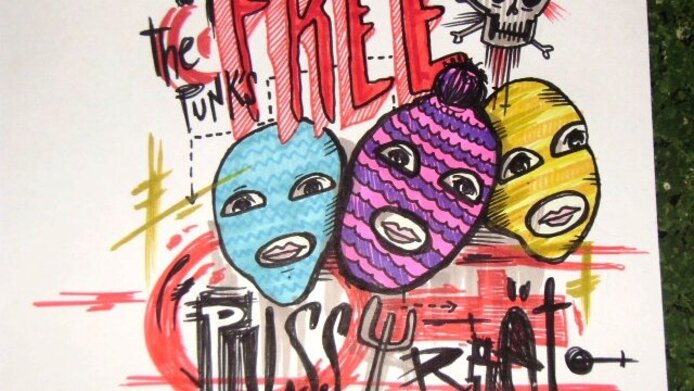The American view of Russia

Is homosexuality forbidden in Russia? If one does not know for sure one would probably guess the answer is “yes”. The image of a country under authoritarian leadership which repeatedly disregards human rights invites this conclusion. In fact it is the wrong answer, what is true is that the Russian parliament adopted a controversial law in 2013 prohibiting propagation of homosexuality to minors. At the same time, the United States experienced strong trends in the opposite direction: same-sex marriage was introduced nation-wide and the “Don’t ask, don’t tell” (DADT) policy for members of the military was dropped. Members of the armed forces are now free to make their sexual orientation public. “US media have played up strongly the contrast between an emphasis on the so-called traditional values by Russian state representatives and the accompanying resurgence of the Russian Orthodox Church on the one side, and the strong focus on equality propounded by the Obama Administration on the other”, explains Katharina Wiedlack from the University of Vienna.
The media stage
In the past few years, this specialist in American studies and gender issues has been following a new wave of reports and public discourse in the US about Russia. In an ongoing research project within the context of a Hertha-Firnberg Fellowship awarded by the Austrian Science Fund FWF, Wiedlack explores the underlying interests, the way these values are renegotiated between East and West and how the projected images fit into the overall context of cultural history. When the feminist Russian activists Pussy Riot staged a protest against Vladimir Putin at the time of his reinauguration as President in 2012, they drew declarations of solidarity from many sources in the US. Stars such as Madonna declared their support of the women, who were sentenced to prison, just as they had come out in support of gays and lesbians. At the same time, US television programmes such as the celebrated series Orange Is the New Black introduced Russian protagonists. “There are, of course, good reasons for this solidarity in the West”, Wiedlack points out. Her research project is concerned, however, with showing how marginal groups are instrumentalised and spotlighted by the media to create a strong confrontational focus.
Construction of national values
Katharina Wiedlack’s project falls within the overall context of New Cold War culture analyses. According to Wiedlack, there are few studies so far about the significance of debates regarding minorities such as homosexuals, people with disabilities or people persecuted for political reasons in this new conflict between East and West. She explains that the recent Western focus on images of human rights violations was useful in that it helps justify interventions. – That is the political side. The fact that strong women modelled on the members of Pussy Riot are now more frequently featured in TV series has an economic background. – There is a market for that. But the model of a conservative Russia is also propagated in movies. “I have yet to find one Russian character representing a progressive model”, emphasises the scholar from the University of Vienna.
Black and white demarcations
It is interesting to note that even reports from news media serve to convey the habitual image of a progressive US identity. “And the inverse figure in that respect is strongly Russian”, notes Wiedlack. Her analyses of media reports over the past 10 years reveal that both the popular press and quality media employ recurring templates: here the liberal West, there the backward East. “The media consistently convey the same images over and over again without shading or nuances”, emphasises Wiedlack. In her work, she noted that particularly the liberal media often presented very simplistic stories. – And it was possible that one and the same publication would carry a feature about the killing of an American transgender woman and a critical report about homophobic propaganda in Russia without evidence of any awareness or reflection on the parallels between these cases. – The researcher notes that the former is presented as an isolated act by an individual perpetrator, while the latter is portrayed as an integral part of Russian culture. It is Wiedlack’s tenet that focusing on the ‘other’ makes it possible to ignore one’s own problems – at least for the moment.
Historical roots of East-West
In her basic research, the young scholar also takes a look back, returning in history as far as the era of Enlightenment in order to place current developments in the value controversy between East and West in a historical context. In this respect, too, Katharina Wiedlack identifies a homogeneous situation. “It was alarming for me to see how the same images, such as Russia being barbaric, were considered to have validity and were propagated with almost identical turns of phrase through the centuries from the philosopher Hegel to the New York Times in the 1990s and the Washington Post in 2005.” The FWF project Looking Eastward: US Identity, Western Values, and Vulnerable Russian Bodies is continuing until the end of 2018.
Personal details
Katharina Wiedlack is an expert in American studies and gender research. She currently holds a Hertha-Firnberg Fellowship granted by the FWF at the Department of English, University of Vienna. Research stays took her inter alia to the University of California, Berkeley and New York University. Her research focus lies on Queer Studies, feminism and subcultures. Her book Queer-Feminist Punk. An Anti-Social History was published in 2015.
Publications and contributions
Katharina Wiedlack: „Queer-Feminist Punk. An Anti-Social History“, 430 Seiten, Zaglossus 2015
Katharina M. Wiedlack: Seeing ‘Red’ (Orange Is the New Black) – Russian Women, US Homonationalism and New Cold War Cultures, in: Gender, rovné příležitosti, výzkum, Vol. 17, No. 1: 29-40, 2016
Katharina Wiedlack & Masha Neufeld: Dangerous and Moving? Disability, Russian Popular Culture and North/Western Hegemony, in: Somatechnics, Volume 6 Issue 2, Page 216-234, 2016
Kateřina Kolářová & M. Katharina Wiedlack. Crip Notes on the Idea of Development, in: Somatechnics, Vol. 6 Issue 2, Page 125-141, 2016





